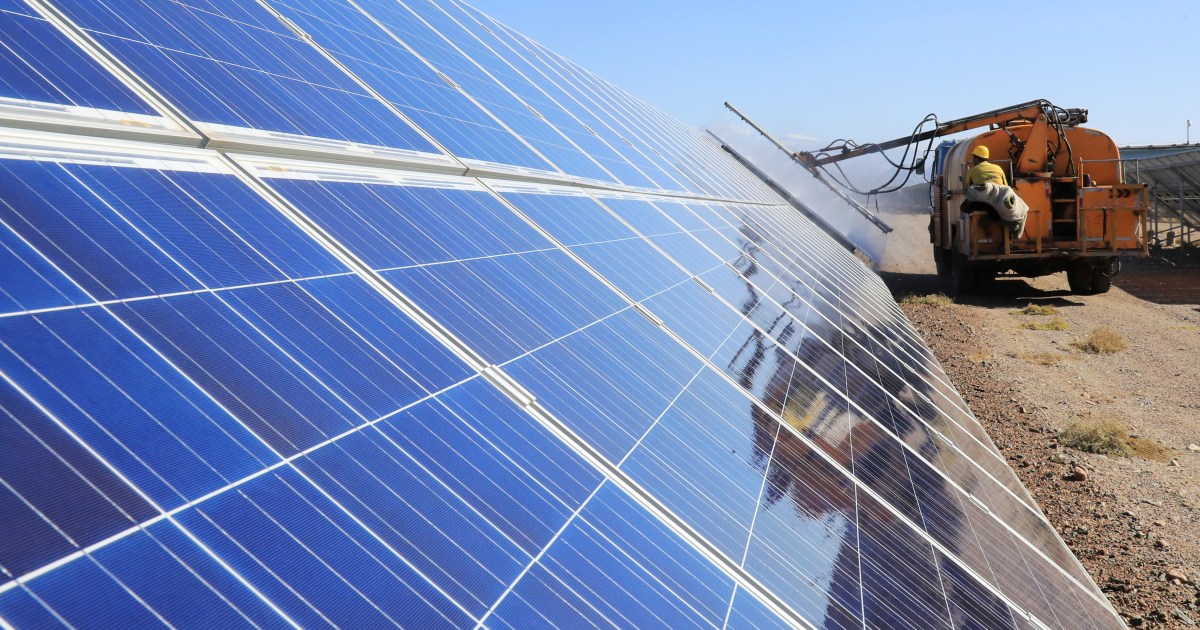Rising costs of photo voltaic modules might disrupt the sector
A key promoting level that made photo voltaic vitality the fastest-growing energy source on the earth—quickly lowering prices—has hit a velocity bump.
Solar module costs have risen 18% for the reason that begin of the yr after falling by 90% over the earlier decade. The reversal, fueled by a quadrupling in the price of the important thing uncooked materials polysilicon, threatens to delay initiatives and sluggish uptake of solar energy simply as a number of main governments are lastly throwing their weight behind it in an effort to sluggish local weather change.
“The disruption to photo voltaic hasn’t been this dangerous in additional than a decade,” mentioned Jenny Chase, lead photo voltaic analyst with clear vitality analysis group BloombergNEF. “Developers and governments are going to need to cease anticipating photo voltaic to get less expensive rapidly.” BNEF barely lowered its forecast for photo voltaic buildout this yr in a report final week, citing rising costs of supplies together with polysilicon as one cause.
Higher costs are affecting demand and will delay some large-scale initiatives, panel-maker Canadian Solar Inc. mentioned on an earnings name on Thursday. In India, about 10 gigawatts of initiatives could also be impacted, equal to greater than 1 / 4 of the nation’s present capability, Mint reported, citing unnamed builders. Large-scale initiatives within the U.S. might additionally get postponed, analysts at Cowen & Co. mentioned.
Projects that haven’t signed value agreements with utilities that purchase the facility would possibly get delayed except the shopper is prepared to pay the next fee for the electrical energy, in keeping with Xiaojing Sun, an analyst at Wood Mackenzie Ltd.
For the photo voltaic business, the timing couldn’t be worse. Renewable vitality lastly has a champion within the White House and impressive local weather targets have been introduced throughout Europe and Asia.
At the middle of the disaster is polysilicon, an ultra-refined type of silicon, one of the vital plentiful supplies on Earth that’s generally present in seaside sand. As the photo voltaic business geared as much as meet an anticipated surge in demand for modules, makers of polysilicon have been unable to maintain up. Prices for the purified metalloid have touched $25.88 a kilogram, from $6.19 lower than a yr in the past, in keeping with PVInsights.
Polysilicon costs are anticipated to stay robust by way of the top of 2022, in keeping with Roth Capital Partners analysts together with Philip Shen.
And the issue isn’t restricted to polysilicon. The photo voltaic business is going through “pervasive upstream supply-chain price challenges,” panel producer Maxeon Solar Technologies Ltd. mentioned in April.
Solar panels are made out of sand that’s heated and purified to ingots of ultra-conductive polysilicon which are sliced into razor-thin wafers, wired up into cells after which assembled into the panels that mount rooftops and canopy huge fields.
Prices for metal, aluminum, and copper are additionally up, as are freight prices. Solar-microinverter provider Enphase Energy Inc., mentioned it expects its cargo volumes to be constrained by semiconductor-component availability.
“Downstream of polysilicon, it’s very painful,” Canadian Solar Vice President Xiong Haibo mentioned at a convention in China, in keeping with business publication Solarbe. “At current, not one of the downstream firms are worthwhile and all of them are lowering manufacturing.”

Still, the hiatus within the long-term downward pattern in prices is partly offset by a continuing enchancment within the effectivity of photo voltaic panels, mentioned Nitin Apte, chief govt officer of Vena Energy Pte., a number one unbiased renewable energy operator in Asia-Pacific. The firm isn’t planning any delays this yr at its photo voltaic initiatives throughout Japan, Taiwan, Australia and India.
“I see this as a brief time period state of affairs, and some initiatives would possibly see that eat into our contingencies,” Nitin mentioned in an interview at his workplace in Singapore. “We’re not slowing down development. We’re locking down orders at the perfect costs we will get.”
Longer-term, the shortages are spurring development of recent polysilicon factories, together with an announcement this month of what could be the most important facility on the earth in China.
“One would anticipate that any materials that has the sort of development that polysilicon has had will proceed to have capability injected into the system,” Vena’s Nitin mentioned. “The problem is timing that capability completely to the expansion.”






